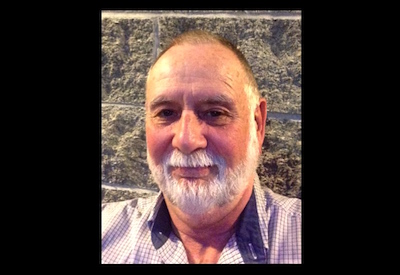Guide to the Canadian Electrical Code, Part I — Instalment 33

Feb 26, 2018
William (Bill) Burr
In this article: Section 66 — Amusement Parks, Midways, Carnivals, Film and TV Sets, TV Remote Broadcasting Locations and Travelling Shows. Since the 24th Edition of the CEC, Part I, (C22.1-18)* is now available from CSA Group, this discussion of Section 66 is based on the new edition.
Rule 66-000 notes that this is a supplementary or amendatory section of the code and applies to the temporary installation of electrical equipment, for amusement parks, midways, carnivals, fairs, film, television, and radio productions, remote broadcasting and recording locations, live performance and entertainment events, touring shows and productions, concerts, sporting events, trade shows, and similar events. The CEC Handbook** provides additional helpful explanations and diagrams.
For the installation of electrical equipment forming part of an amusement ride, refer to CAN/CSA-Z267 – Safety Code for Amusement Rides and Devices.
Rule 66-002 contains special terminology definitions used in this section for amusement park, amusement ride and concession.
Section 66 is divided into 6 parts: General, Grounding, Services and Distribution, Wiring Methods and Equipment, Single-conductor cables, and Motors.
General
The general requirement rules apply to the installation of all equipment under this section.
Rule 66-100 provides requirements for supporting conductors and
- limits them, on structures supporting amusement rides, to decorative lighting, signal, communication and control circuits
- limits circuits for decorative lighting and control to only be installed on the structure of one amusement ride
- specifies minimum clearance for overhead conductors of
- 5.5 m across highways, streets, lanes, and alleys
- 5 m across areas accessible to vehicles
- 3.5 m across areas accessible to pedestrians
Rule 66-102 requires that electrical equipment be protected from mechanical or other damage and be guarded for the safety of persons as per Rule 2-200.
Grounding
Rule 66-200 sets out the grounding requirements for mobile generators, including:
- grounding of service and distribution in accordance with Section 10
- connection of grounding electrodes of mobile generators with single conductor, plug-in, locking-type connectors
- providing a minimum No. 4 AWG dedicated grounding conductor for the mobile generator, run directly by the shortest route, with a maximum 50 m total length
- no more than two sets of mated, in-line, single-pin connections
Rule 66-202 requires all exposed non-current-carrying metal parts of fixed electrical equipment, such as
- motor frames
- starters and switch boxes
- parts of rides
- concessions, and ticket booths
- moving electrically operated equipment
- cord-connected, operator-controlled remote stations,
be bonded to ground by the bonding conductor in the supply cord, or by a separate minimum No. 6 AWG insulated flexible copper bonding conductor, connected to the grounded circuit conductor at the service disconnect.
Services and distribution
Rule 66-300 specifies that
- service equipment be suitably sized for the connected load
- enclosures be lockable
- generators be accessible only to authorized persons
Rule 66-302 requires that service equipment be mounted on a solid backing and be weatherproof or protected from the weather by a weatherproof enclosure.
Rule 66-304 requires each concession and ride be provided with a fused disconnect switch or circuit breaker, and that enclosures for switches, panelboards, and splitters be lockable.
Wiring methods and equipment
Rule 66-400 specifies that, except for single-conductor cables, all wiring be done in accordance with Section 12. In addition, cords, cables, conduits and other equipment must
- be protected from physical damage
- for cords, be
- hard-usage type, in good repair, and provided with strain relief entering enclosures and plug-in connectors
- suitable for outdoor use if exposed to the weather
- where plug-in connections are used have
- different ampere rated connectors and receptacles designed to prevent cross connection
- the female connector attached to the load end of the cord (except for the grounded conductor and the bonding conductor of single conductor cables)
- an AC multi-conductor connector, if used, polarized
- for temporary intermittent lighting load installations (except for amusement parks, midways, carnivals, home shows, and tent meetings), receptacles rated 15 A, conforming to CSA configuration 5-15R rated 120 V, hospital grade, and protected by a fuse or circuit breaker rated not greater than 20 A, may be used
- for temporary wiring for portable stage equipment be in accordance with Rules 44-350, 44-352 and 44-356
Rule 66-402 specifies requirements for installation of equipment:
- lighting streamers must be of extra-hard-usage outdoor flexible cord with weatherproof lampholders, with terminals of a type that puncture the insulation contacting the conductors, or permanently attached leads connected to the cord
- fluorescent luminaires must not be mounted end-to-end, unless marked for that purpose
- incandescent lampholders must be the screwshell type, except bayonet-type lampholders are okay for film and TV sets, and TV remotes
- all equipment intended for use outdoors, must be protected from inclement weather, or be suitable for the location
Rule 66-404 requires that 5-15R or 5-20R receptacles installed in itinerant midways, carnivals, fairs, and festivals supplying loads in outdoor or damp locations, be protected by a Class A type ground fault circuit interrupter.
Single-conductor cables
Rule 66-450 provides that single-conductor cables may be No. 4 AWG and larger, if they are
- suitable for the intended application and the rated voltage
- a matched set with all conductors of the circuit, including the bonding conductor, the same length
- covered or guarded to prevent tripping hazards
Rule 66-452 requires that, except for fixed wiring, single-conductor cables must be prevented from inadvertent movement, where the available fault current exceeds 10,000 A, by current-limiting overcurrent devices.
Rule 66-454 specifies that free air ratings be in accordance with correction factors in Section 4. An exception is made for temporary installations where single conductor bundles are separated by at least one bundle diameter, in which case, free air ratings without correction factors may be used.
Rule 66-456 provides guidance on the use of single-conductor cable connections and requires that connections:
- be inaccessible to unqualified persons
- for plug-in connectors, be of a locking type, incorporate a mechanical interlock or colour-coding, and have sealed or capped non-used connections
- only be connected in parallel to reduce voltage drop, and if so, have overcurrent protection sized for the smallest conductor ampacity
- for tapping tees, paralleling tees, or rigid turnarounds
- have no more than one tapping or parallel tee per conductor at any one point in the power distribution system
- have no mechanical strain on the connection
- not be directly connected to a single-pin plug or connector, rigidly housed in a multiple-connection device
- Not be directly connected to a panel mount inlet or outlet, or to a multiple-connection device, with a cable less than 2 m in length
- for in-line single-conductor cable connections more than 150 volts-to-ground, be enclosed in a lockable, nonconductive box or similar enclosure with a permanent legible, conspicuous label specifying the circuit voltage
- use a single multiple-connection device for distribution splitting or combining devices requiring more than two load connections per conductor
Rule 66-458 requires that each circuit incorporating single-conductor cables include a bonding conductor run with the circuit conductors.
Motors
Rule 66-500 requires that all motors be installed in accordance with Section 28.
Rule 66-502 requires that motors be installed only in dry locations unless marked or protected for other locations.
Rule 66-504 allows portable motors to be connected with Type SOW flexible cord.
In the next installment, we will be discussing Section 68 — Pools, tubs, and spas.
* The source for this series of articles is the Canadian Electrical Code, Part I, published by CSA.
**Note the CEC Handbook is also published by CSA.
William (Bill) Burr is the former Chair of the Canadian Advisory Council on Electrical Safety (CACES), former Director of Electrical and Elevator Safety for the Province of BC, and former Director of Electrical and Gas Standards Development and former Director of Conformity Assessment at CSA Group. Bill can be reached at Burr and Associates Consulting; billburr@gmail.com















